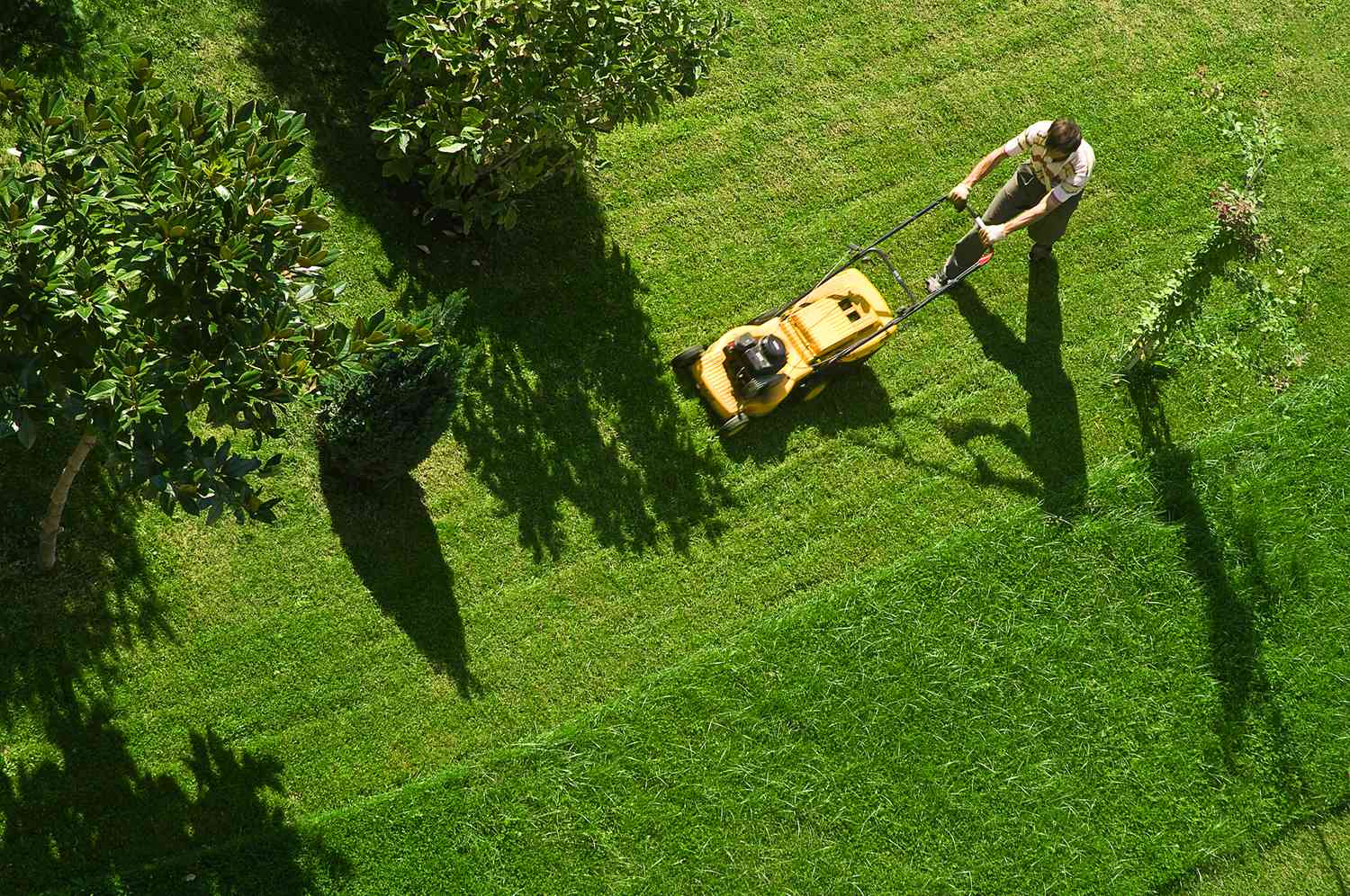When the weather is nice, a beautiful lawn may be the focal point of your garden. However, it also requires some maintenance throughout the year.
Lawn maintenance may be physically demanding and time-consuming. When you buy your first home, you may need to care for a lawn for the first time, which is just one of the many benefits of putting your foot on the property ladder! But do not be discouraged. Once you’ve established a regular lawn care schedule, you’ll be astonished at how simple – and even pleasurable – the process can be.
So, if you’re a new homeowner or simply want healthier grass in your yard, let Snowman Removal’s lawn care specialists show you the ropes. We’ve included some excellent lawn care suggestions in this blog to help you take care of your lawn from day one!
Ten Lawn Care and Maintenance Tips
To get you started, here are ten lawn care advice from the experts at Snowman Removal:
1. Get to Know Your Soil
Regarding grass, what happens above ground reflects what occurs below. When proper soil pH levels meet with beneficial microbial activity in healthy soils, grasses have better access to the vital plant nutrients they require to grow thick, lush, and green.
Take help from Snowman Removal lawn care professionals and test your soil to determine your starting point for essential factors such as soil pH.
2. Mow and Edge your Lawn Frequently
Mowing and edging are the easiest ways to make a lawn appear loved and cared for. Observe a few simple mowing principles to avoid further damage to the grass.
- Ensure your blades are sharp.
- Mow more frequently on a higher setting rather than scalping the lawn when it has grown too long. Scalped grass creates bare spots, which fosters weeds and moss.
- Mow according to the weather. Spring and early summer demand more frequent mowing, but winter requires little or no mowing.
- Never mow when the ground is wet, frozen, or dry.
Edging the lawn creates a nice crisp finish and is a quick and straightforward solution to an untidy landscape. Ideally, use an edging half-moon iron or a sharp spade to straighten edges and shears to cut grass. Remove the cut grass from any beds, and don’t scalp here since this can promote weeds and moss.
3. Weed your Yard!
Many weeds are opportunistic and may grow anyplace in the garden, even your lawn. If you don’t want weeds to ruin your lawn, you have a few options:
- You may remove them by hand, but be careful to remove all the roots, especially with weeds like dandelions, and don’t let them blossom.
- You may also spray weeds with a specific specialized lawn weedkiller, which, when used appropriately, will not hurt the grass.
- Create a consistent mowing and feeding schedule to help the grass grow thicker and outcompete the weeds.
- You may also consider leaving an area with some weeds to give food for pollinators.
4. Feed your Lawn!
Many people understand the need to feed their plants, but few realize the same is true for their lawns. A lawn consists of numerous microscopic plants that absorb nutrients and water. If your lawn appears dull, thin, patchy, or yellowing, it is quite probable that you need to feed it with a particular lawn fertilizer.
When the earth begins to warm up in the spring, it is an excellent time to fertilize your lawn. The nutrients in lawn feed assist in thickening and greening your grass, and in the spring and summer, the feed contains more nitrogen necessary for vigorous green growth.
In the summer, you may use a liquid feed to help green the grass rapidly, which is especially handy if you plan a BBQ.
Autumn is frequently a season when we forget about our lawns, but it is a necessary time to feed. Feeding in the autumn protects the grass from harsh winter conditions since the nutrients concentrate on solid roots and disease resistance rather than boosting growth.
When applying a treatment, always use a spreader to distribute the proper amount and ensure it is well watered.
5. Do Overseeding
Overseeding improves the look of thin, uneven lawns rather than beginning from scratch.
Before spreading the seed, mow your grass and rake cuttings or trash. At this point, apply a lawn dressing to smooth out any lumps or bumps and offer a solid foundation for the fresh seed.
Sow the entire area you wish to overseed at a rate of 25g per square metre. For bigger areas, I usually suggest using a spreader. If no rain is anticipated, lightly rake the seed into the soil and water well.
Keep the new seedlings wet while they germinate, and do not mow until the new grass reaches 5-8 cm in height.
6. Do not Allow your Dogs to Destroy your Landscape
We all adore cats and dogs, but dealing with animals (and their pee) can be a headache regarding lawn care. If possible, encourage your pet to stay off the grass or limit them to a small area so that the remainder of your yard remains safe.
7. Aerate your Lawn
To ease compaction, homeowners should aerate their lawns early in the spring. Depending on the state of your grass, you will only need to perform this once every other year. “To check for soil compaction, stick a screwdriver into the soil up to 6 inches,” Elworthy elaborates. “If you need significant effort to do it, your soil is likely compacted and would benefit from an aeration.”
8. Top dressing Your lawn
Although not strictly necessary for your normal routine, top dressing is employed by professional groundskeepers and will help your grass appear better and stay strong and healthy.
The top dressing is ideal after aeration because it can be brushed into the perforations, allowing further air penetration. It also serves as a medium for grass to sprout while smoothing any irregularities.
9. Make Sure Your Yard has Excellent Drainage
If your grass becomes wet after a rainstorm, this indicates inadequate drainage. Aeration (as discussed above) can help your lawn’s drainage, but in highly flood-prone gardens, it may be required to excavate a drainage system to ensure that excess water exits your grass.
10. Do Not Be Afraid to Ask for Help
We understand that having a well-kept yard you manage gives you great pride—we adore that! However, don’t let pride prevent you from seeking assistance when needed.
If lawn care is daunting or you aren’t getting the desired results, have a trained lawn care consultant like Snowman Removal come and look. It is always preferable to seek expert assistance before the situation worsens.
Conclusion:
We hope this blog has helped you overcome your lawn care hurdles so you are not scared by lawn maintenance.
We at Snowmann Removal think that lawn maintenance should be enjoyable and simple. We continually post fresh lawn care suggestions on our blog to help you keep your lawn looking great all year. Don’t worry; if you run into a grass problem that you don’t know how to handle, contact the Snowman Removal team.
If we cannot give you the essential lawn care suggestions through our blog, we will send a professional to your home to inspect the condition of your lawn.







